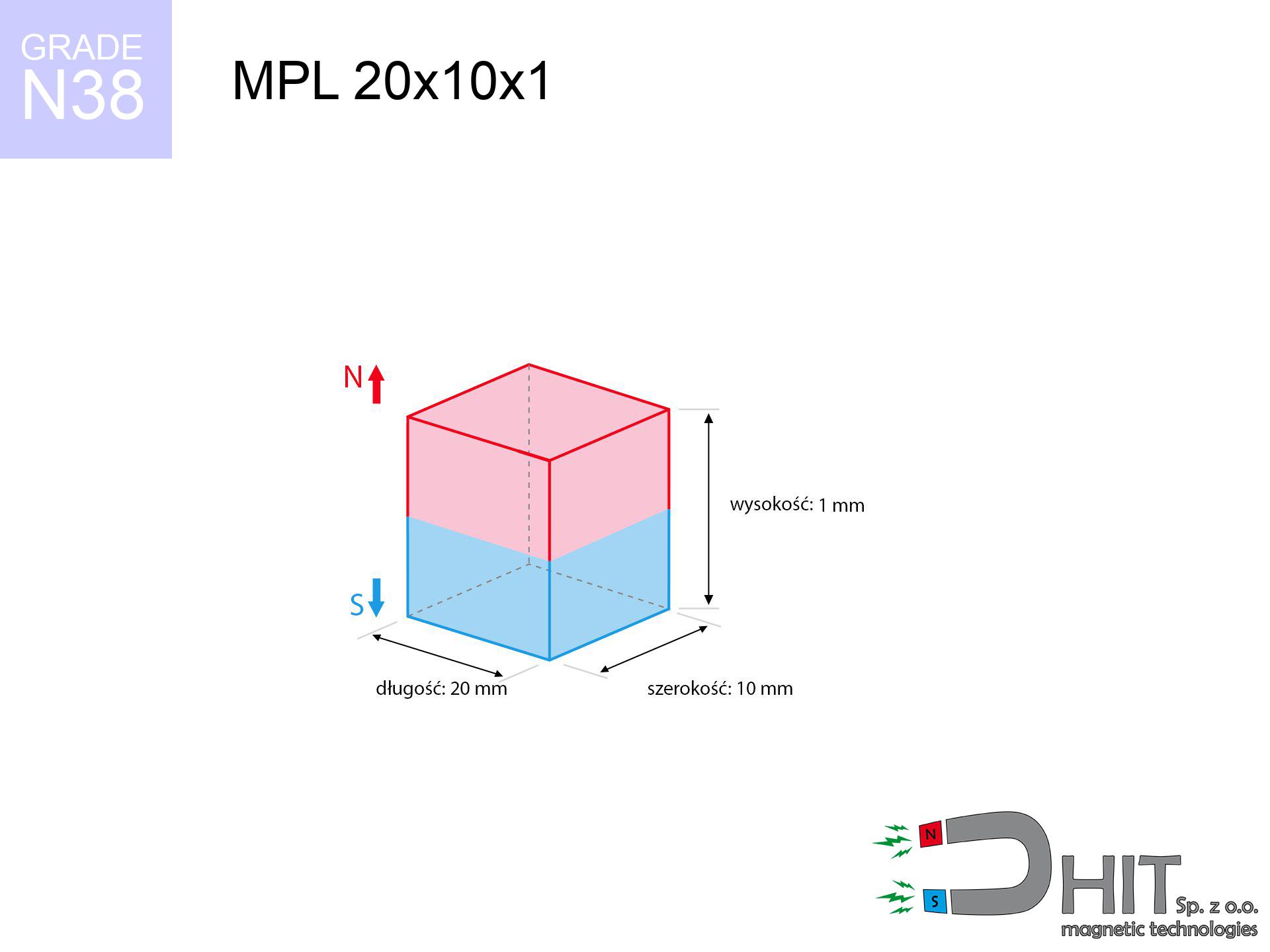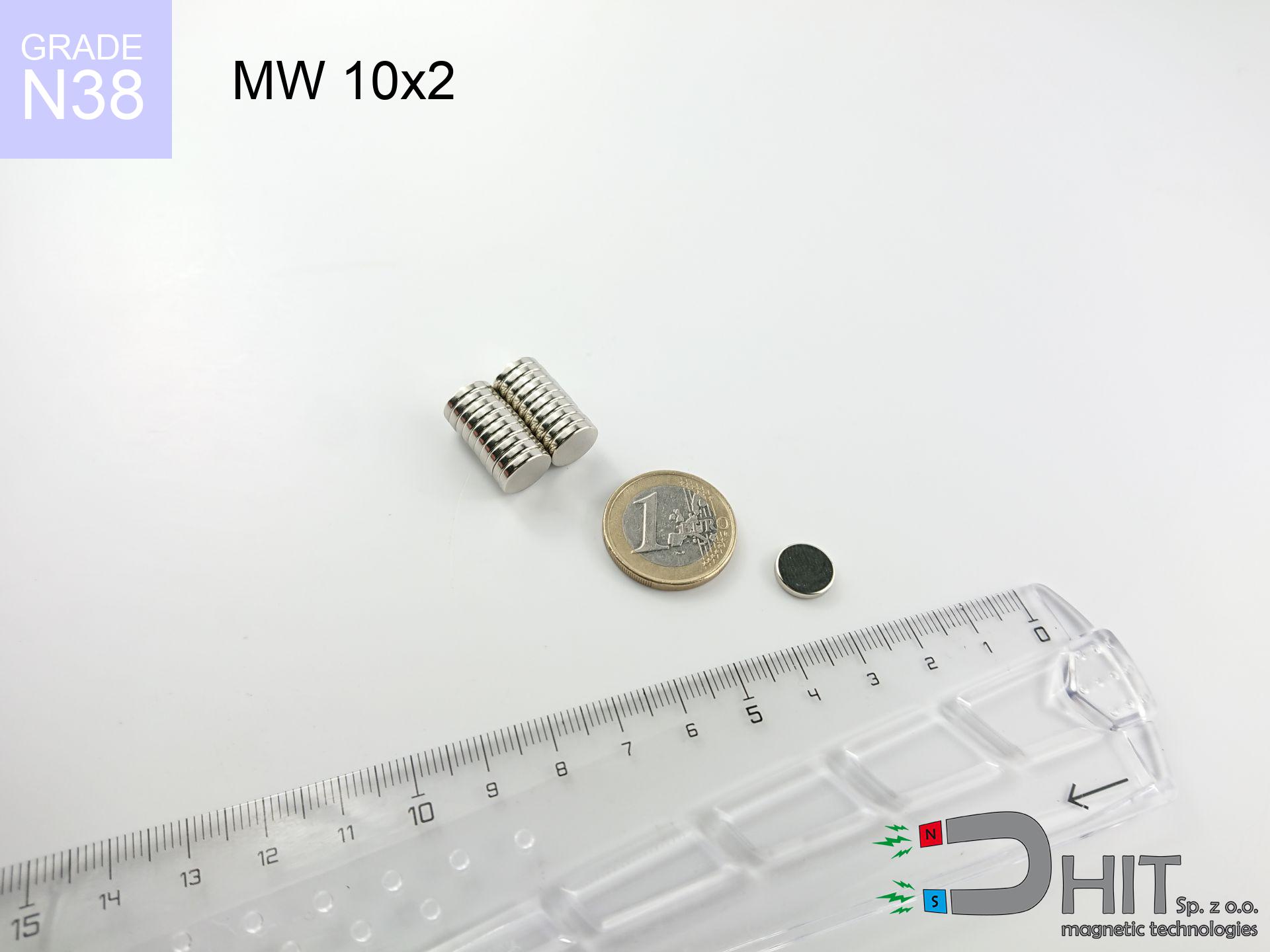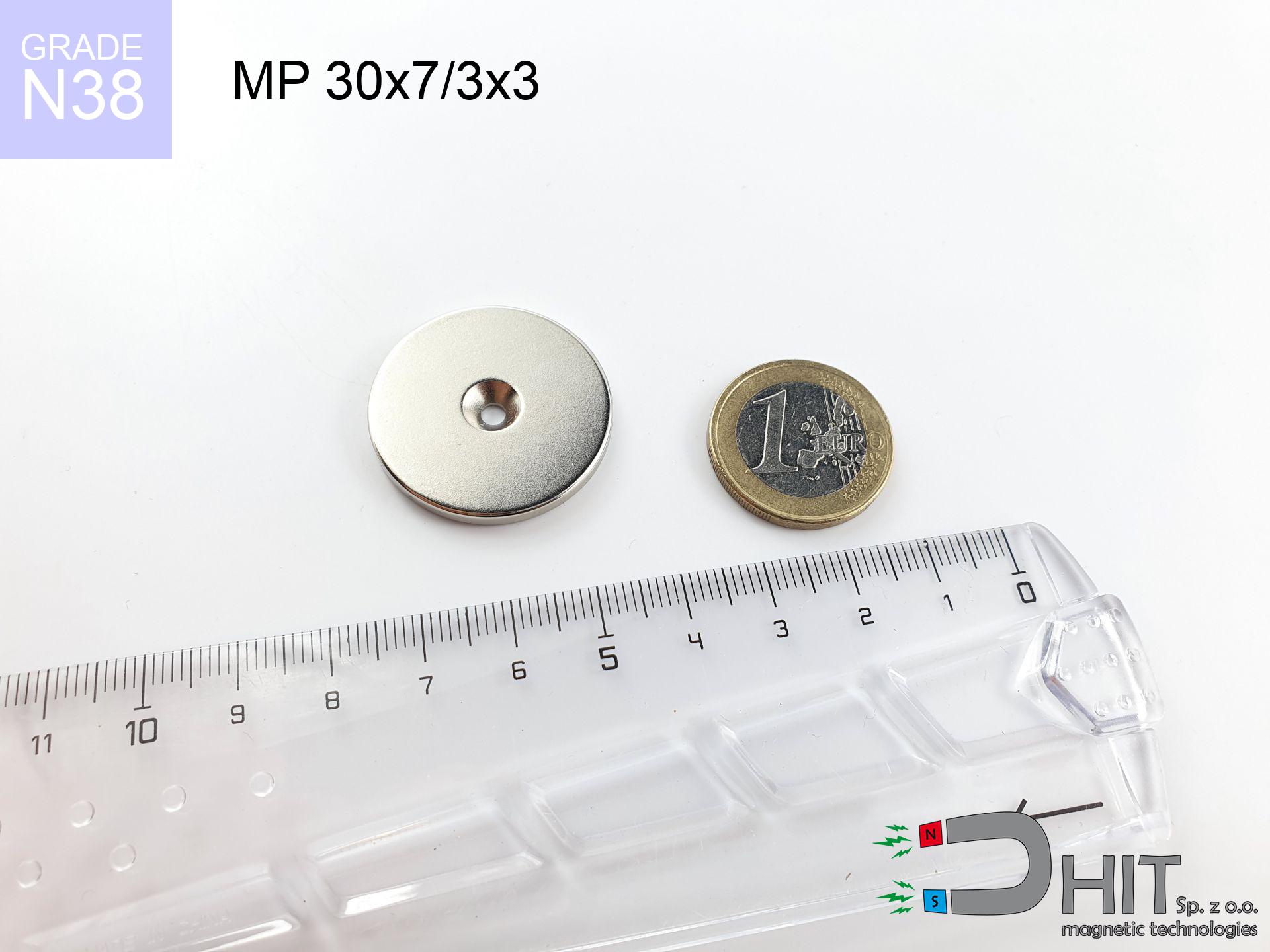MPL 20x10x1 / N38 - lamellar magnet
lamellar magnet
Catalog no 020126
GTIN: 5906301811329
length [±0,1 mm]
20 mm
Width [±0,1 mm]
10 mm
Height [±0,1 mm]
1 mm
Weight
1.5 g
Magnetization Direction
↑ axial
Load capacity
1.12 kg / 10.98 N
Magnetic Induction
87.15 mT
Coating
[NiCuNi] nickel
0.996 ZŁ with VAT / pcs + price for transport
0.810 ZŁ net + 23% VAT / pcs
bulk discounts:
Need more?Not sure where to buy?
Contact us by phone
+48 22 499 98 98
alternatively send us a note by means of
form
the contact section.
Strength as well as shape of a neodymium magnet can be checked on our
modular calculator.
Same-day processing for orders placed before 14:00.
Magnetic properties of material N38
Physical properties of sintered neodymium magnets Nd2Fe14B at 20°C
Shopping tips
Advantages and disadvantages of rare earth magnets.
Besides their high retention, neodymium magnets are valued for these benefits:
- They virtually do not lose strength, because even after ten years the performance loss is only ~1% (based on calculations),
- They are resistant to demagnetization induced by external field influence,
- Thanks to the elegant finish, the surface of Ni-Cu-Ni, gold-plated, or silver-plated gives an modern appearance,
- Magnets exhibit impressive magnetic induction on the outer side,
- Thanks to resistance to high temperature, they can operate (depending on the shape) even at temperatures up to 230°C and higher...
- Possibility of detailed creating as well as adjusting to concrete conditions,
- Versatile presence in innovative solutions – they find application in mass storage devices, electric motors, precision medical tools, and other advanced devices.
- Compactness – despite small sizes they provide effective action, making them ideal for precision applications
Disadvantages of neodymium magnets:
- At very strong impacts they can break, therefore we recommend placing them in special holders. A metal housing provides additional protection against damage, as well as increases the magnet's durability.
- Neodymium magnets decrease their strength under the influence of heating. As soon as 80°C is exceeded, many of them start losing their force. Therefore, we recommend our special magnets marked [AH], which maintain stability even at temperatures up to 230°C
- They oxidize in a humid environment. For use outdoors we recommend using waterproof magnets e.g. in rubber, plastic
- Limited ability of making threads in the magnet and complex shapes - preferred is a housing - magnetic holder.
- Potential hazard to health – tiny shards of magnets are risky, in case of ingestion, which gains importance in the context of child health protection. Furthermore, tiny parts of these products can complicate diagnosis medical in case of swallowing.
- With mass production the cost of neodymium magnets is a challenge,
Magnetic strength at its maximum – what it depends on?
Magnet power was determined for the most favorable conditions, assuming:
- with the use of a yoke made of low-carbon steel, guaranteeing maximum field concentration
- possessing a massiveness of at least 10 mm to ensure full flux closure
- with an polished touching surface
- with direct contact (without paint)
- for force applied at a right angle (in the magnet axis)
- in stable room temperature
What influences lifting capacity in practice
Please note that the working load may be lower influenced by the following factors, starting with the most relevant:
- Clearance – the presence of any layer (paint, tape, air) acts as an insulator, which lowers capacity steeply (even by 50% at 0.5 mm).
- Force direction – remember that the magnet has greatest strength perpendicularly. Under sliding down, the capacity drops drastically, often to levels of 20-30% of the maximum value.
- Plate thickness – insufficiently thick sheet does not accept the full field, causing part of the power to be wasted to the other side.
- Material type – ideal substrate is pure iron steel. Stainless steels may have worse magnetic properties.
- Plate texture – smooth surfaces guarantee perfect abutment, which improves field saturation. Uneven metal reduce efficiency.
- Thermal environment – heating the magnet causes a temporary drop of force. It is worth remembering the maximum operating temperature for a given model.
* Holding force was measured on the plate surface of 20 mm thickness, when a perpendicular force was applied, however under parallel forces the load capacity is reduced by as much as 5 times. In addition, even a minimal clearance {between} the magnet’s surface and the plate reduces the holding force.
Safety rules for work with neodymium magnets
Precision electronics
Be aware: neodymium magnets generate a field that interferes with sensitive sensors. Keep a safe distance from your mobile, device, and navigation systems.
Warning for allergy sufferers
It is widely known that nickel (standard magnet coating) is a strong allergen. If you have an allergy, refrain from direct skin contact or select versions in plastic housing.
Cards and drives
Avoid bringing magnets near a wallet, laptop, or TV. The magnetic field can irreversibly ruin these devices and wipe information from cards.
Fire risk
Dust created during grinding of magnets is flammable. Do not drill into magnets unless you are an expert.
Crushing risk
Watch your fingers. Two large magnets will snap together instantly with a force of massive weight, destroying everything in their path. Be careful!
Medical interference
For implant holders: Strong magnetic fields affect electronics. Keep minimum 30 cm distance or request help to work with the magnets.
Adults only
Product intended for adults. Tiny parts can be swallowed, leading to intestinal necrosis. Keep away from children and animals.
Do not underestimate power
Use magnets with awareness. Their powerful strength can shock even professionals. Stay alert and do not underestimate their power.
Operating temperature
Monitor thermal conditions. Exposing the magnet to high heat will destroy its properties and pulling force.
Eye protection
Despite metallic appearance, the material is delicate and cannot withstand shocks. Do not hit, as the magnet may shatter into sharp, dangerous pieces.
Warning!
Learn more about risks in the article: Safety of working with magnets.




![UMP 107x40 [M8+M10] GW F 400 kg / N38 - search holder UMP 107x40 [M8+M10] GW F 400 kg / N38 - search holder](https://cdn3.dhit.pl/graphics/products/ump107x40-m8+m10-gw-f-400-kg-mup.jpg)




